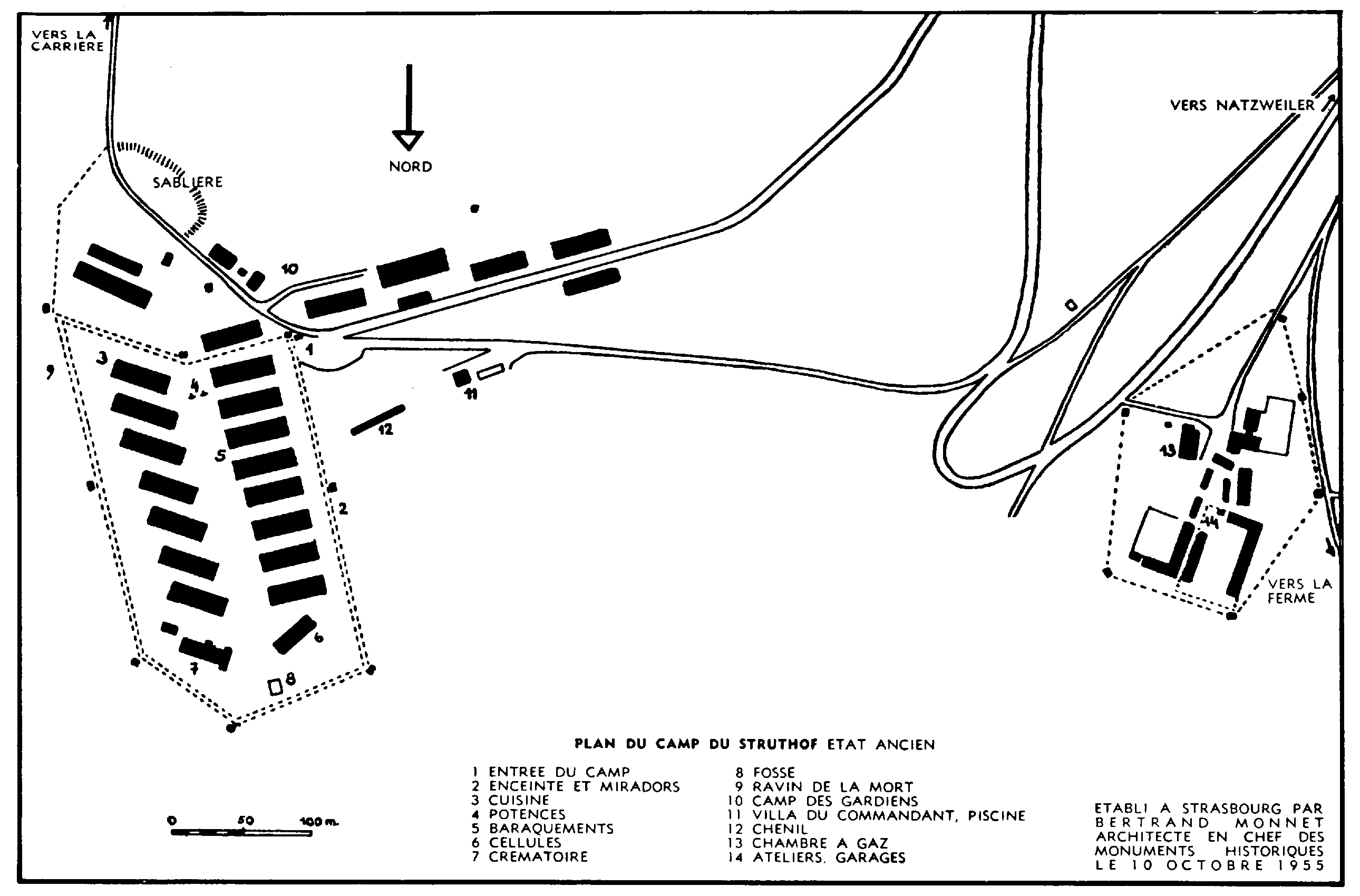 |
 |
THE MAP OF STRUTHOF
All the roads depicted on the map were built by the internees of the camp of Struthof. Given the nature of the terrain (sandstone), many internees died (they called the main road "the road of 10,000 skulls"). The gas chamber was situated outside the camp: in fact it was built with a few modifications after the design of a room used by the SS for training in the use of gas masks against tear gas.
![]()
Those who wish details on this drawing and a few items about the "revisionist" challenges may click here.
This explains the modest cost of the transformation (236.08 Reichsmarks) of the chamber; the work consisted mainly in the installation of a peephole, of a funnel and of a tap for the introduction of salts releasing hydrocyanic acid in the presence of water (additionally a repainting, from an extension of an external pipe). The chamber was already virtually airtight[?].
Afterwards, for the experiments that had to do with phosgene, an extraction rod with a measure on the end was set at the center of the entry door. You can see it in the documents that follow.
We have of course the plan of the gas chamber, but the official documents for them which we have been able to find were in hard-to-read photocopies. The chamber is very simple. It consists of the introduction chute, a glass peephole, a powered exhaust by means of an external chimney, a central grille on the floor used for cleaning.
The gas chamber, after the murders and the phosgene gas tests was used anew for training against tear gas; the cyanide gas introduction mechanism had no need to be removed, nor the observation glass, and the mechanism therefore was found and analyzed: one can still see the funnel at the museum of Besancon (the pipe itself was lost after the analysis, but we will see later that this has no importance given the method of gassing used.)
For the experiments involving phosgene, a small modification was however introduced; a measuring rod across the door. The evacuation motor, assorted things and even this rod were still present at the liberation of the camp, as we see in the photos: the rod was mistakenly interpreted initially as being the mechanism for introduction of the gas.
Last modified: June 1, 2009
Technical/administrative contact: webmaster@holocaust-history.org
